Dreaming of finding gold? Aussie Gold fever is infectious! There are a good reasons why you can dream about finding gold and striking it rich in Australia – simply put, there is a whole lot of gold in Outback Australia! But what do you need to have that lucky break and find gold?

Many hard core gold prospectors of Outback Australia are on a mission to strike it rich. There is even a TV series called “Aussie Gold Hunters”! In extreme weather the cast are bombarded with mechanical breakdowns, cutthroat competition and daily challenges to see if they are resourceful enough to endure the back-breaking work to discover gold.
https://www.discoverychannel.com.au/shows/aussie-gold-hunters/
When you go prospecting ‘fossicking’ for gold as a recreational activity you get the chance to get out in a place of natural beauty and have fun. With research, a lot of walking and of course the right equipment, the exhilaration for the chance discovery is remarkable.
But remember prospecting in the outback for is best carried out- 2 hours after sunrise and 2 hours before sunset. You will find out why!
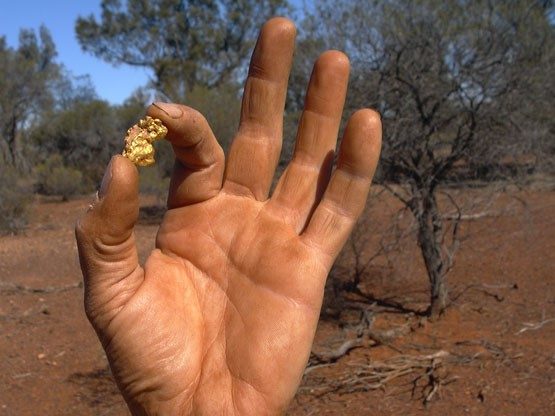
1. Origin of Gold
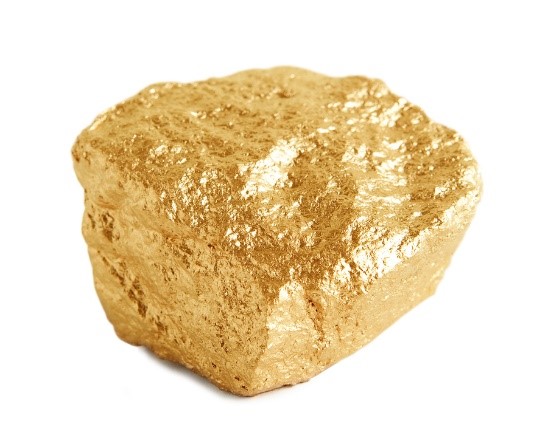
The biggest gold discoveries in Australia have almost always been closely associated with igneous intrusions (rock made from volcanic magma). So areas of the country which have been disturbed by intrusions of igneous rocks are more likely to have gold deposits. Where the Earth’s crust is weak and has faulted, folded, tilted or erupted, intrusions of igneous rock containing mineral fluids is likely.
It is thought that many gold deposits especially those found in igneous or sedimentary rocks (rock made from layers of eroded rock or shells) are formed from circulating groundwater, driven by heat from bodies of magma having intruded into the Earth’s crust within 3-8 km of the surface.
It is also possible that the gold bearing solutions could have been expelled from magma as it cooled, consequently precipitating ore materials as they move into cooler surrounding rocks. Hence gold deposits can be located near masses of granitic rock.
Gold bearing veins in metamorphic rock (rock that has be re-crystallised by heat and pressure) in mountain belts are a result of high temperatures and pressures changing rocks to new minerals. As water is released from the rocks it rises and precipitates ore materials.
Gold is extremely resistant to weathering and when freed from enclosing rocks, is carried downstream as metallic particles consisting of ‘dust’, flakes, grains or nuggets.
2. Fool’s Gold
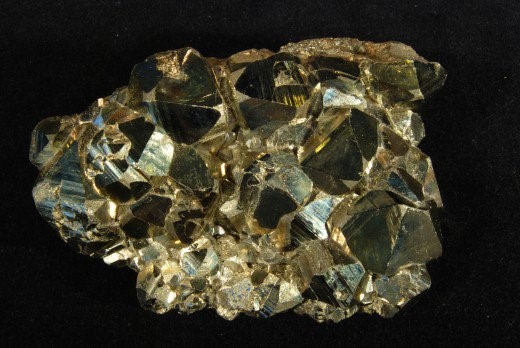
Fool’s Gold is a mineral, chemically known as iron pyrite or iron sulphide. To the untrained eye it looks very similar to gold because it is a similar yellowish colour but there are some significant differences between the two.
• Gold is golden to silver yellow whereas Fool’s Gold is pale to medium brassy yellow.
• Gold has a round edge but Fool’s Gold has sharp, angular edges.
• Gold is soft and can be scratched with a knife blade but Fool’s Gold cannot be scratched.
• Gold will flatten when hit with a hammer whereas Fool’s Gold and will shatter when hit with a hammer.
• Gold will leave a pure yellow residue when rubbed against white porcelain whereas Fool’s Gold will leave a greenish-black powdery residue.
• Gold does not smell but Fool’s Gold smells like rotten eggs when forcefully rubbed with a hard object.
• Gold is dense, so will have no movement when gently rocked in the water, whereas Fool’s Gold will move with the water.
• Gold will stay the same shade when viewed in sunlight or shade, but Fool’s Gold in sunlight it will glisten and in the shade it will not shine
3. Where to Find Gold in Largest Quantities
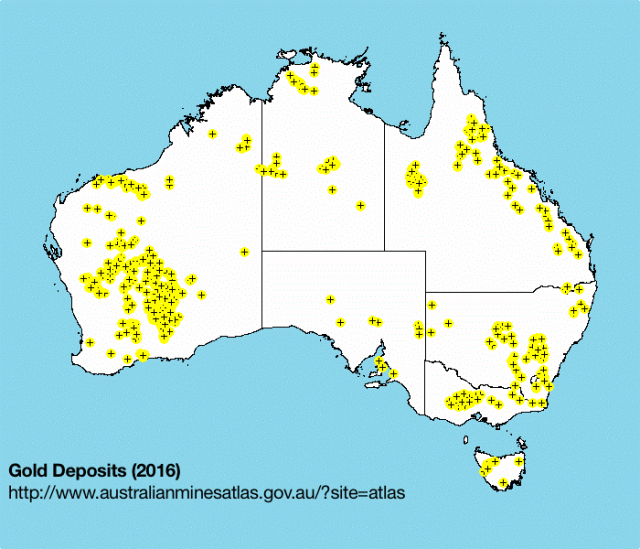
Metal detecting for gold means that individual prospectors or amateur nugget hunters can find gold hidden in the outback in creeks, streams and rivers. Gold hides in gravel inside bends, in rock cracks and can get caught under boulders. Metal detecting for gold nuggets on the surface, at bedrock level or on cliffs and valley edges must be tried with caution because if you cause too much disturbance loose rocks can fall on you. Looking for new exposed ‘virgin’ gravel at bedrock level could also be profitable.
The key is to plan ahead and co-ordinate your trip with a local gold prospecting group, who can set you up and guide you through the equipment you need as well as what permission you may need to explore the area.
Great places to start are old goldfields because the equipment nowadays may allow you to uncover gold that the miners have missed in the past. Ghost towns, historical and abandoned sites means less people are around to search. Beaches, swimming areas, jetties and piers to have flowing water which may have carried gold far and wide.
Of course it is best to go where gold has been found in the largest quantities:-
• In New South Wales, gold is found at Oberon in the shadow of the Blue Mountains Glen Innes. Bathurst is popular too, where the surrounding creeks of Hill End can prove fruitful. Young has some sites to try your luck and Nundell near Tamworth has a hilly rocky terrain, where you might uncover a small fortune.
Gold Atlas of New South Wales – a modern day treasure map that matches known gold seams with accessible public land.
http://www.gold-net.com.au/maps1nsw.html
An even better start is to read Doug Stone’s new Gold Atlas of New South Wales which has gold prospecting maps.
http://www.minersden.com.au/doug-stone-gold-atlas-of-nsw-doug-stone
• In Western Australia, Kalgoorlie is famous for the Kalgoorlie-Boulder “Golden Mile”. Broad Arrow, Coolgardie, Kimberley, Leonora, Laverton and Mertondale are also hot spots
A book called ‘Gold prospecting in Western Australia’ is a useful guide.
https://www.fishpond.com.au/Books/Gold-Prospecting-Western-Australia-Rob-Kanen
• In the Northern Territory, Arltunga has gold that may be found in the alluvium/colluvium areas fine grained clay, silt or sediments that can be carried by water currents and eventually deposited. Areas such as West and Central Harts Range, nestled amongst mountains such as Mount Brassey, Mount Palmer and Mount Mabel. At Warrego gold occurs in the surface soil and can be found by dry panning. Metal detectors have been used successfully in the area. Brock’s, Maude, Pine and Tennant Creeks as well as Union Reef have led to significant finds as well as the Daly River district and the Macdonnell Ranges.
• Queensland is one of the most gold rich states. Indeed the coast of Queensland is known as the “Gold Coast”! However, there is a lot more government red tape to deal with including special licenses and prospecting fees. Georgetown, Gladstone, Charter’s Towers, Clermont, Cloncurry, Cracow, Mackay, Maryborough- Gympie, Nanango, Palmer River Goldfields, Bowen, Ravenswood, Rockhampton and Warwick are all areas where you are likely to find gold.
http://www.findgoldprospecting.com/where-to-find-gold-in-queensland-prospecting-panning-detecting/
• Victoria is the favourite area for prospecting using metal detectors. Prospecting is allowed in most State Forests and Reserves. Private property can only be accessed with the land owner’s permission. Prospecting is also permitted on non-prohibited Crown Land and permitted areas in certain parks under the National Parks Act. Throughout the Victorians Goldfields region are towns associated with the 1850’s gold rush era. The Victorian Goldfields lie between Ballarat, Bendigo, Donald and Ararat. Other notable towns include Maryborough, Maldon, Castlemaine, Daylesford, Avoca, Inglewood, Dunolly, Stawell and Possom Hill.
https://www.goldfieldsguide.com.au/blog/22/gold-prospecting-in-the-victorian-goldfields
• South Australia is the least productive of all gold areas in Australia. Gold has been found Barossa Goldfield, Mount Crawford, Echunga Goldfield, Gumeracha Goldfields, Forrest Range Diggings, Kings Bluff Goldfield, Mintaro, Kychering Hills and Woodside areas.
4. Panning
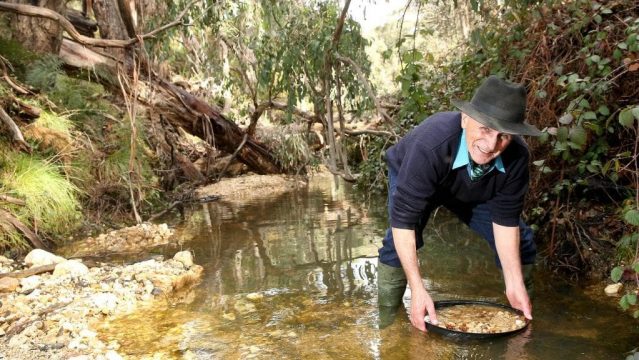
The thrill of seeing a one ounce nugget slowly show itself in the bottom of the pan is priceless! Unlike large-scale mining gold panning requires a very minimal amount of equipment and the first step is to gather all the necessary equipment.
Regardless of whether you are an old hand or a new prospector, the gold pan is still the most essential piece of equipment you can have. It is one of the first tools used in unearthing gold and is possibly one of the last used. Recent technology has developed the plastic gold pan rather than using the old type steel gold pans. The plastic pans are lightweight and do not rust. They can vary from a single riffle to several riffles. The best ones are the 90° riffle pans, as it is almost impossible to lose any gold from them! Another important piece of equipment is a ½” aluminium sieve which is first placed over your gold pan enabling you to sieve the very large rocks from your wash.
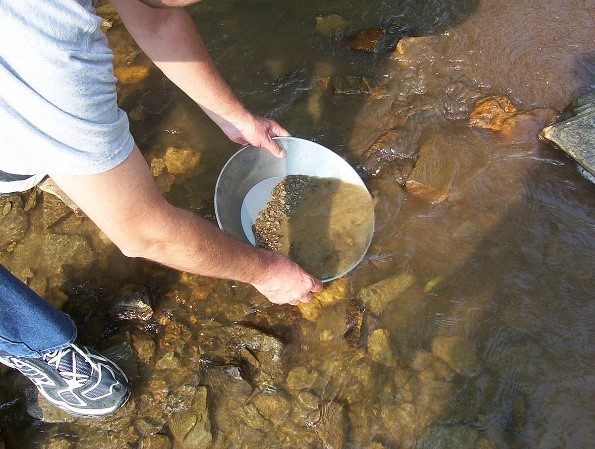
Some small glass vials to store your find work best for gold, unless of course you expect to be transporting some sizeable nuggets! Yet some of the smaller flakes can be missed if the light doesn’t hit it at the right angle so a magnifying glass could help to give you a closer inspection. To reduce the chance of the gold flakes falling from your finger tip a pair of tweezers also comes in handy!
5. Metal Detectors
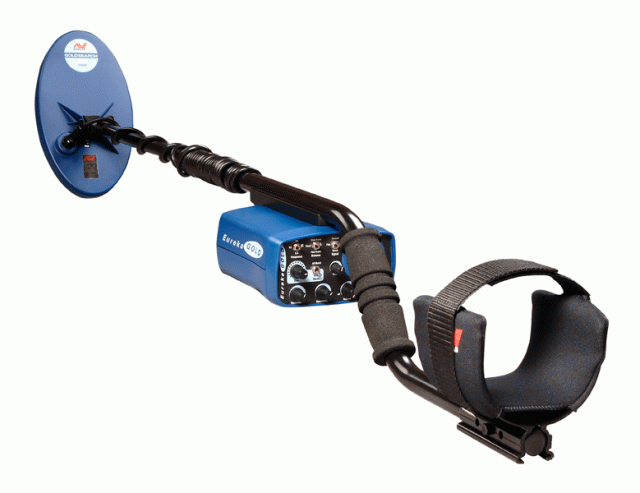
Metal detectors have led the way to fun, personal, small scale gold hunting. As the name implies a metal detector will locate all types of metal, not only gold! So silver, copper, platinum, man-made iron and aluminium (extracted from their ores) and alloys like brass or bronze.
First you must decide how serious you are about metal detecting. Metal detector can vary in price and the market is flooded with them, so research is needed. Most of them work in the same manner as they feature a coil built into the base that turns an electromagnet when it is powered on. This electromagnet scans the surrounding ground and an audible sound will alert the user to its presence.
Most metal detectors have either induction balance or pulse induction. Induction balance (VLF- very low frequency), single frequency models work well in light moderate mineralisation and are able to locate smaller gold nuggets. The downside is that they will trigger the presence of small mineral pockets.
Pulse induction (PI) metal detectors generally go deeper and are effective at sensing the presence of large gold nuggets and veins buried deep underneath the Earth’s surface. Large scale mining companies use this type for this reason.
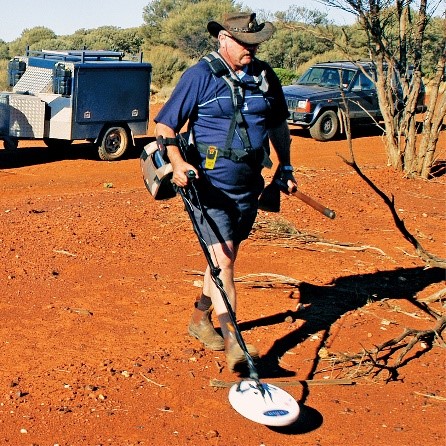
There are two types of coils on the metal detectors, concentric or widescan coil. Widescan coils are more effective for gold prospecting, but they do not go as deep as concentric coil metal detectors. The rule of thumb in regard to depth is the larger the coil, the greater the depth on larger nuggets whereas the smaller the coil you have a lesser depth but a greater sensitivity on smaller nuggets. Another point to consider is the operating frequency of your detector (If you use a high frequency detector you will easily locate small targets but with limited depth but if you use a lower frequency detector you will locate larger objects at a greater depth).
Another feature is the Ground Balance, an adjustment made to ‘cancel’ or ignore ground mineralisation. It may be done manually or automatically and allows your detector to optimise itself in soil conditions. The coil must be kept level and low to the ground for the best detection.
Today Metal Detectors are compact and light enough to operate. A control box mounted directly on the rod which is connected to the search coil so the entire unit is then in one piece. Battery packs on some detectors can be hip-mounted which make it lighter. If you intend to be out all day away from your vehicle, it is advisable to carry a spare battery pack with you.
‘Metal detecting for gold in Australia’ by Doug Stone is helpful book to get for prospecting tips and maps.
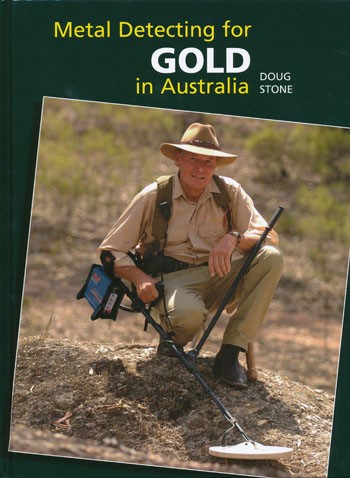
https://www.mapsbookstravelguides.com.au/metal_detecting_for_gold_in_australia
6. Pin Pointing the Gold
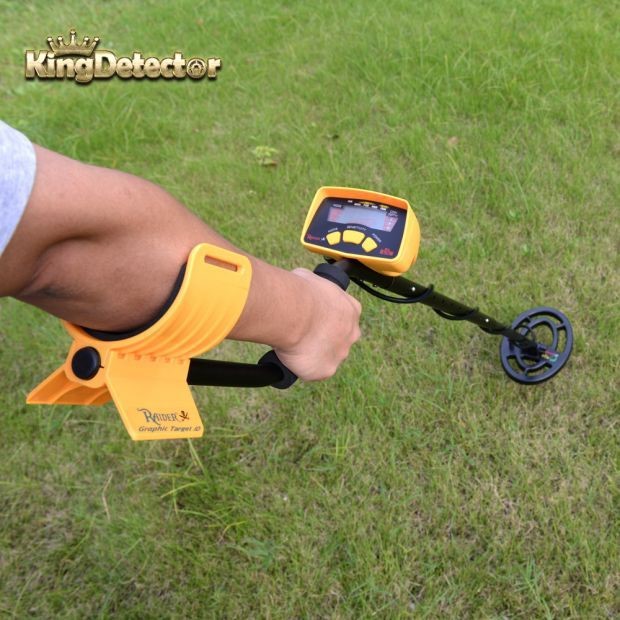
Once you have heard a signal from your metal detector, the next thing to do locate the exact spot where your treasure lies. By sweeping the search coil in an “x” pattern, you are able determine a more precise spot. When using concentric coils, the detector will emit the loudest signal when the target is directly under the centre of the search coil. If you are using a widescan coil, the method above can be applied or alternatively, you can tip the coil on its front edge and to locate tiny pieces of gold. The soil can be repeatedly scraped away and checked again. If it is a very small target that is hard to find, you can take a fistful of dirt and wave it in front of your search coil until you hear the sound of metal and hopefully your buried treasure.
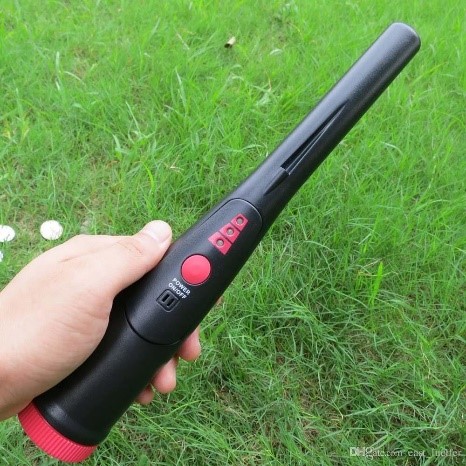
Alternatively very useful addition to your arsenal is a Metal Detector Pin pointer. The can help locate the precise spot where the metal lies after it has been discovered with your standard metal detector. Pinpointing tools help your efforts, saving time and frustration!
To keep the landowners happy it is good practice to fill in your hole afterwards.
7. Gold Detecting Accessories
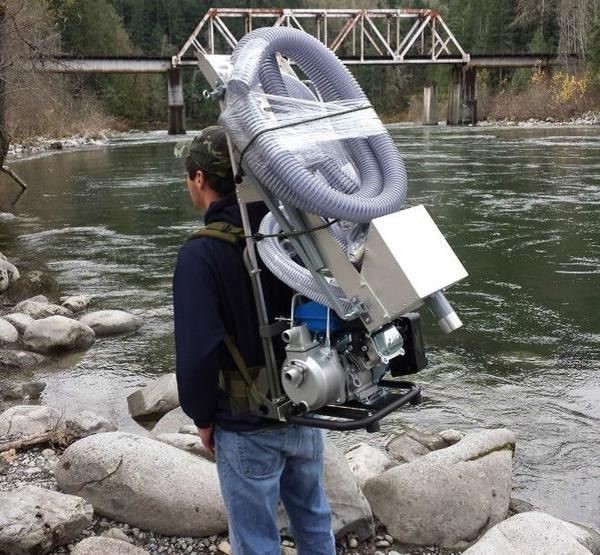
Best to not load yourself with unnecessary stuff in your backpack!
After the initial purchase of your machine, pan and pinpointer there are several more prospecting accessories that will really help your trip to be more fun and less work. You will need a backpack with your lunch and 4 litres of water!
The main tools to take are:-
• Headphones
Headphones save the metals detector’s battery as there is then no need to hear the built in speakers. They also give you more privacy and eliminate other hunters from hearing your find! When wearing headphones it is easier to hear a faint signal, which you could have missed if there was background noise (traffic, machinery, fast flowing water). It is best to have a pair with volume control and are adjustable, with plenty of cushioning around the ears for comfort. However if the headphones are too big they may make your head sweat, and are more uncomfortable in hot weather.
• Digging tools and trowels
Diggers are an important tool because they will make the job quicker and easier on your hands. They vary in size and length depending on the ground conditions. If the treasure you discover is only a few inches from the ground a small digger or trowel will be enough. It is best to invest in a heavy duty one that is up to the task of digging thousands of holes full of rocks and roots. The serrated edge is good for cutting roots, undergrowth and difficult ground. Best too, to spend a little more on a better quality one as a cheap diggers will not stand up to the job! If deeper digging is required a larger shovel may be needed.
• Glass jar, vial or pouch
You need a dedicated place to put the treasure in once it has been dug up. For smaller nuggets and flakes a thick walled glass specimen bottle with a secure top would suffice. Larger nuggets could be stored in a pouch, some hunters take ziploc bags too. A safe pocket or belt with built in secure storage is also needed.
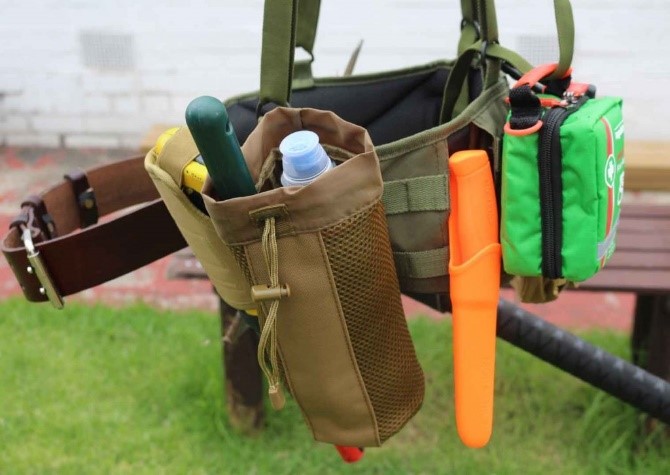
Even more ideas for basic accessories are in the next video:-
8. Fossicking and Prospecting Regulations

Something else you have to keep in mind to fossick for Gold in Australia is that there is a lot more government red tape to navigate than in other countries. You will need to see if you need permission to have Miners rights on the land you are planning to search. Operating without proper permission is illegal and an offence under the Mining Act 1978 and carries heavy fines. Any gold or other minerals found during unauthorised prospecting will be confiscated and considered stolen from the Crown carrying large penalties. Most States and Territories have designated public fossicking areas
The rules vary from state to state so it is best to plan ahead and get a permit.
• In New South Wales a licence to fossick is not required except for State Forests. The permits are obtained from the nearest Forestry office.
• A licence is required for the whole of Queensland and can be obtained online or by contacting the nearest District and Regional office,
• In Victoria a permit must be carried at all times.
• In Western Australia Gold prospecting and fossicking cannot be carried out in national parks, nature reserves within town sites or other classified areas as well as Aboriginal land and heritage sites. Permission must be sought from the landowner to enter farmland and private property.
• In South Australia fossicking does not require a permit but fossicking in National Parks is not permitted. No permit is needed to fossick in the Northern Territory, however you may need to notify some landowners that you intend to fossick on their land.
• The majority of Australian Capital Territory is Namadgi National Park where fossicking is not permitted
http://www.gold-net.com.au/fossicking1.html
There are many prospecting clubs and metal detecting clubs to be found online where you can also ask about permits and remember if you are travelling to a remote area always advise someone of your movements and check back with them on your return home.
https://www.prospectingaustralia.com.au/forum/viewtopic.php?id=125
9. Code of Conduct

After asking permission or gaining a permit, there is a code of conduct which needs to be followed in order to retrieve your gold without leaving holes all over the place. In order to leave the area in the same shape as it was when you got there, filling in the holes after you have disturbed the terrain is important. If you are new to metal detecting, practice how to dig a plug in your own back garden!
The best way is to use a tool to lift the flap up and expose the hole leaving one side of the square still attached to the grass, so that some roots are still untouched. After using the pinpointer or digging more everything can be plugged back into the same hole.
Of course if you are gold prospecting on stony ground is a lot easier as all you need to do is push some stones or sediment back into the hole. You must respect private property, particularly farmland by closing all gates behind you. It is expected that when you are out metal detecting you are a representative for the hobby so best not to do anything that might give it a bad name.
10. Selling Your Gold Nuggets
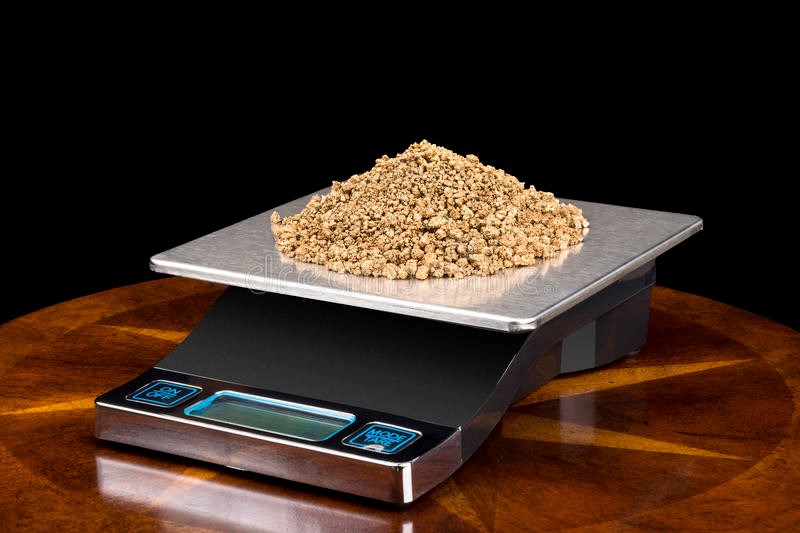
Now that you have found some gold nuggets and flakes, you need to know what to do with them! There are several places and outlets that are keen to buy any gold you have found but while some of them pay top dollar, others may only give you a fraction of the true value. It is important to be aware that gold nuggets have impurities such as silver and other metallic content, as well as possibly some ironstone or quartz in the matrix of the nugget. So the gold content and your return, will be less than the weight of the gold nugget because of the impurities. It is also best to sell the nuggets, in the condition that they were found as collectors prefer them that way
The first step is to weigh your gold on a high quality digital scale, as gold is usually purchased and sold based on its weight in ounces and grams. Gold nuggets are rare and an attractive gold nugget will get you a premium price. The larger the nugget the more rare and desired it will be, and will sell at a premium price. The next step is to find out how much you gold is worth. If you have been panning or prospecting in an area known for its gold the nearest town may have some gold shops in which you could get a quote. Avoid pawn shops but go to jewellery shops, particularly the larger ones as they will be bound to offer a fair price. You could give them a call to find out. Possibly the best place to sell gold is the online auction site eBay.
https://www.ebay.com.au/b/Australian-Gold-Bullion-Nuggets/
On eBay you can spot daily prices as well as looking on other sites like:
https://goldprice.org/ or http://www.kitco.com/
